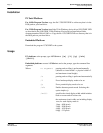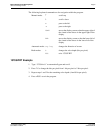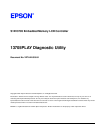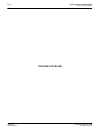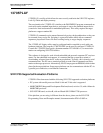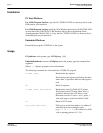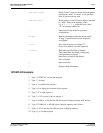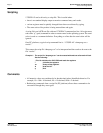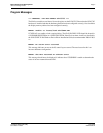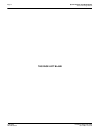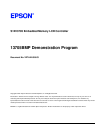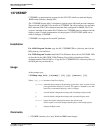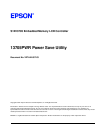
Page 6 Epson Research and Development
Vancouver Design Center
S1D13705 13705PLAY Diagnostic Utility
X27A-B-005-04 Issue Date: 01/07/04
Scripting
13705PLAY can be driven by a script file. This is useful when:
• there is no standard display output to monitor command entry and results.
• various registers must be quickly changed faster than can achieved by typing.
• The same series of keystrokes is being entered time and again.
A script file is an ASCII text file with one 13705PLAY command per line. All scripts must
end with a “q” (quit) command in order to return control to the operating system. The semi-
colon is used as a comment delimitor. Everything on a line after the semi-colon will be
ignored.
On a PC platform, a typical script command line is: “13705PLAY < dumpregs.scr >
results”.
This causes the script file “dumpregs.scr” to be interpreted and the results to be sent to the
file “results.”
Example 1: The script file “dumpregs.scr” can be created with and text editor and will look
like the following:
; This file initializes the S1D13705 and reads the registers
i ; Initialize the registers.
xa ; Dump all the registers
la ; And the LUT
q ; Exit
Comments
• All numeric values are considered to be hexadecimal unless identified otherwise. For
example, 10 = 10h = 16 decimal; 10t = 10 decimal; 010b = 2 decimal.
• Redirecting commands from a script file (PC platform) allows those commands to be
executed as though they were typed.



